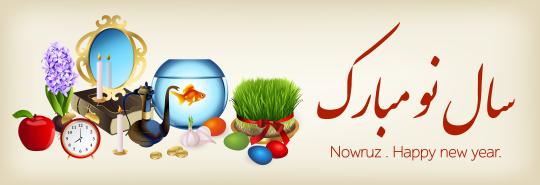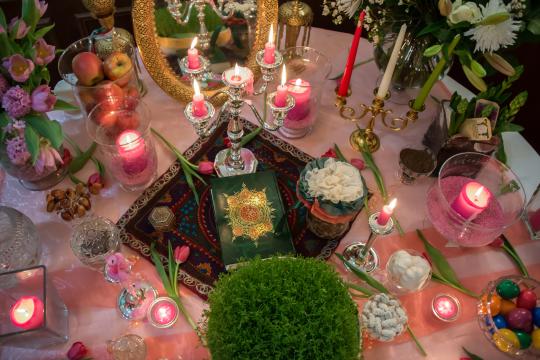Nowruz: A Persian New Year Celebration of Spring

What is Nowruz?
Nowruz, also known as Persian New Year, is a multicultural celebration observed worldwide by many groups in Western, Southern, and Central Asia, South Caucasus, Balkans, and around the Black Sea. This celebration marks the beginning of spring and typically falls at the end of March. The Spring Equinox also marks the first month of the Solar Hijri Calendar, which is used as an official calendar used in Iran and Afghanistan. Nowruz is one of the oldest celebrated holidays in the world, dating back to over 3000 years ago.
The origin of Nowruz can be traced back to ancient Iranian mythology, specifically to one of the world’s longest epic poems titled “Shahnameh”. This epic tells the story of Iranian King Jamshid, who saves humanity from a deadly winter by constructing a massive jeweled throne and being raised to the heavens to shine like the sun. Everyone was delighted by this, and gathered around him to scatter gems and declared this day, “New Year’s Day”.
How is Nowruz celebrated?
Because Nowruz is recognized in countless corners of the world, there are numerous ways to celebrate it. The most common way to across cultures is by cleaning. In Iran, Nowruz is a 13-day holiday, where families come together to tidy the home, wear clean, new clothing, and prepare traditional dishes. Many people arrange a Haftseen table, which includes 7 symbolic items. These items are usually but not limited to:
- Sabzeh- wheatgrass or lentils that represent birth
- Samanu: a sweet pudding made of wheat germ, indicating prosperity
- Senjed: dried oleaster, representing love
- Seeb: an apple, signaling health
- Seer: garlic, also signaling health
- Somaq (or Sumac): a crushed spice, representing sunshine
- Serkeh: Vinegar, representing age
Some variations of these tables, as seen above, include coins symbolizing wealth and prosperity, decorated eggs symbolizing fertility, candlesticks representing light, and even a live goldfish, representing life.
On the 13th and final day of Nowruz, many families celebrate outside the home with a picnic in nature. Before the sabzeh (or wheatgrass) is discarded in running water, many young Iranian women seeking a partner will braid a portion of it into their hair, believing that this will provide them a wish. Nowruz has and will continue to unify friends and family with food and communication, and allows them to fully appreciate the world around them.

*This is a repurposed version of an article and may differ from the original. View the original post.

